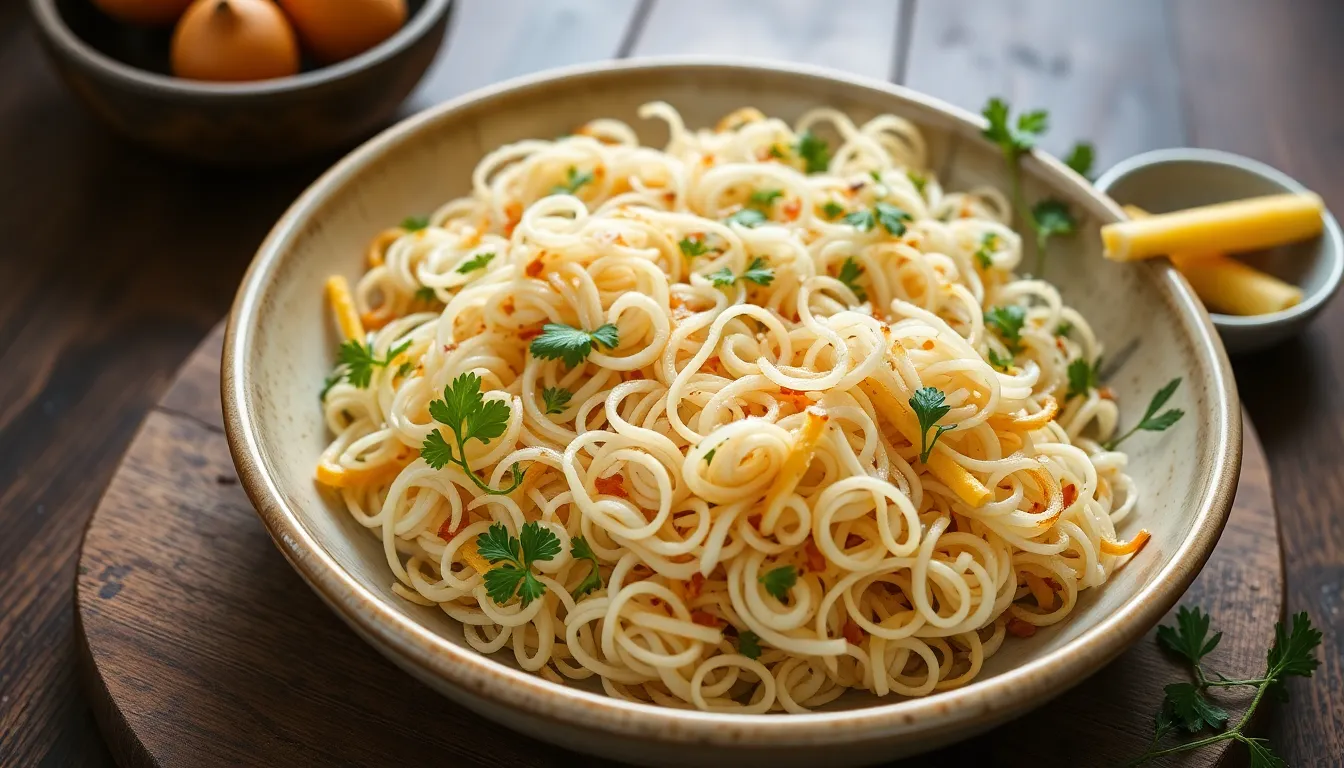Dehydrating for a Healthy Gut: Tips and Recipes
I. Introduction
The importance of gut health cannot be overstated. It plays a crucial role in digestion, nutrient absorption, and overall well-being. A healthy gut microbiome is essential for a robust immune system and can even influence mood and energy levels. Therefore, incorporating gut-friendly foods into your diet is vital.
One effective method for preserving these nutritious foods is through dehydrating. Dehydrating extends the shelf life of fruits, vegetables, herbs, and spices while concentrating their flavors and nutrients. This article aims to provide you with valuable tips and delicious recipes for dehydrating foods that are beneficial for your gut health.
II. The Benefits of Dehydrating Foods
Dehydrating foods offers numerous benefits that contribute to a healthier lifestyle. Here are some notable advantages:
A. Nutritional preservation
Dehydration helps retain essential vitamins and minerals, making it an excellent method for preserving the nutritional integrity of foods.
B. Enhancing flavor and texture
Dehydrating intensifies the natural flavors of foods, offering a unique taste experience. It also alters the texture, providing a satisfying crunch when snacking.
C. Convenience for healthy snacking
Dehydrated foods are lightweight and portable, making them a convenient option for on-the-go snacking without sacrificing nutrition.
D. Supporting gut health through fiber-rich foods
Many dehydrated foods are rich in fiber, which is essential for maintaining a healthy digestive system. Fiber aids in digestion and promotes the growth of beneficial gut bacteria.
III. Understanding Gut Health
To effectively support gut health through dehydrated foods, it’s essential to understand the role of the gut microbiome and the types of foods that promote a healthy gut.
A. Explanation of gut microbiome
The gut microbiome comprises trillions of microorganisms residing in the digestive system. These bacteria, fungi, and other microbes contribute to digestion, metabolism, and immune function. A balanced microbiome is crucial for optimal health.
B. Foods that promote gut health
To support a healthy gut microbiome, including the following foods in your diet:
- Fruits and vegetables
- Whole grains
- Nuts and seeds
- Fermented foods
C. Importance of prebiotics and probiotics
Prebiotics are non-digestible fibers that feed beneficial gut bacteria, while probiotics are live bacteria that can provide health benefits. Combining prebiotic-rich foods with probiotics can enhance gut health significantly.
IV. Tips for Dehydrating Foods
When it comes to dehydrating foods, following the right techniques can ensure the best results. Here are some practical tips:
A. Choosing the right foods
Select foods that dehydrate well and are rich in nutrients. Here are some examples:
- Fruits: Apples, bananas, berries
- Vegetables: Carrots, bell peppers, kale
- Herbs and spices: Basil, oregano, ginger
B. Preparing foods for dehydration
Proper preparation is key to successful dehydration:
- Washing and cutting: Thoroughly wash and slice your fruits and vegetables into uniform pieces to ensure even drying.
- Blanching vegetables (if necessary): Some vegetables, like carrots and broccoli, may require blanching to preserve color and flavor.
C. Dehydrating methods
There are several methods to dehydrate foods:
- Using a dehydrator: This is the most efficient method, allowing for consistent temperatures and airflow.
- Oven drying: An oven can be used for dehydration, but it’s essential to use the lowest setting and keep the door slightly ajar for airflow.
- Air drying: This method works best in low-humidity areas for herbs and certain fruits.
D. Storing dehydrated foods
Proper storage ensures your dehydrated foods last longer:
- Airtight containers: Store dehydrated foods in airtight containers to prevent moisture absorption.
- Proper labeling and dating: Always label containers with the contents and date of dehydration to track freshness.
HTML Table: Preferred Foods for Dehydration and Their Gut Health Benefits
| Food Type | Examples | Gut Health Benefits |
|---|---|---|
| Fruits | Apples, Bananas, Berries | High in fiber, rich in vitamins |
| Vegetables | Carrots, Kale, Bell Peppers | Packed with antioxidants and prebiotics |
| Herbs & Spices | Ginger, Oregano, Basil | Anti-inflammatory properties |
V. Dehydrating Recipes for Gut Health
Now that you understand the benefits and methods of dehydrating, let’s dive into some delicious recipes that promote gut health.
A. Dehydrated Fruit Snacks
1. Recipe for Apple Chips
Ingredients:
- 4 medium-sized apples (any variety)
- 1 teaspoon cinnamon (optional)
- Juice of 1 lemon
Instructions:
- Preheat your dehydrator or oven to 140°F (60°C).
- Core and slice apples into thin rounds (about 1/8 inch thick).
- In a bowl, mix the lemon juice and cinnamon. Toss the apple slices in the mixture.
- Arrange the apple slices in a single layer on the dehydrator trays or a baking sheet.
- Dehydrate for 6-8 hours, or until the apples are crisp and dry.
- Let cool, then store in an airtight container.
2. Recipe for Banana Chips
Ingredients:
- 4 ripe bananas
- Juice of 1 lime (optional)
Instructions:
- Preheat your dehydrator or oven to 140°F (60°C).
- Peel and slice bananas into 1/4 inch thick rounds.
- Brush the banana slices with lime juice to prevent browning (optional).
- Arrange slices on the dehydrator trays or baking sheet.
- Dehydrate for 6-10 hours until dry and crispy.
- Cool and store in an airtight container.
B. Dehydrated Vegetable Chips
1. Recipe for Kale Chips
Ingredients:
- 1 bunch of kale
- 1 tablespoon olive oil
- 1 teaspoon sea salt
- Optional seasonings (nutritional yeast, garlic powder)
Instructions:
- Preheat the dehydrator to 125°F (52°C) or the oven to 200°F (93°C).
- Wash and dry the kale leaves, removing the stems.
- Tear the leaves into bite-sized pieces, then toss with olive oil and seasonings.
- Spread in a single layer on dehydrator trays or a baking sheet.
- Dehydrate for 4-6 hours or bake for 10-15 minutes until crispy.
- Let cool and store in an airtight container.
2. Recipe for Beet Chips
Ingredients:
- 2 medium-sized beets
- 1 tablespoon olive oil
- 1 teaspoon sea salt
Instructions:
- Preheat the dehydrator to 145°F (63°C) or the oven to 200°F (93°C).
- Wash and slice beets thinly (about 1/8 inch thick). A mandoline works great for this.
- In a bowl, toss beet slices with olive oil and salt.
- Arrange slices in a single layer on dehydrator trays or a baking sheet.
- Dehydrate for 6-8 hours or bake for 30-40 minutes, flipping halfway through, until crisp.
- Cool and store in an airtight container.
C. Dehydrated Herb Blends
1. Recipe for Italian Herb Mix
Ingredients:
- 1/4 cup dried oregano
- 1/4 cup dried basil
- 1/4 cup dried thyme
- 1/4 cup dried parsley
Instructions:
- Mix all dried herbs in a bowl until well combined.
- Store in an airtight container and label.
2. Recipe for Spicy Seasoning Blend
Ingredients:
- 1/4 cup dried chili flakes
- 1/4 cup dried garlic powder
- 1/4 cup dried onion powder
- 1/4 cup dried cumin
Instructions:
- Combine all ingredients in a bowl and mix well.
- Store in an airtight container and label.
VI. Creative Ways to Use Dehydrated Foods
Dehydrated foods are versatile and can be incorporated into various meals. Here are some creative ways to use them:
A. Adding to smoothies
Blend dehydrated fruits into your morning smoothies for a nutrient boost and added flavor.
B. Incorporating into salads
Sprinkle dehydrated vegetable chips on salads for a crunchy texture and enhanced nutrition.
C. Making homemade trail mixes
Combine dehydrated fruits, nuts, and seeds to create a healthy trail mix perfect for snacking.
D. Using in soups and stews
Add dehydrated vegetables to soups and stews for extra flavor and nutrients. Just rehydrate in broth or water before adding.
VII. Conclusion
In summary, dehydrating foods is an effective and enjoyable way to preserve nutritional value while contributing to gut health. By choosing fiber-rich fruits, vegetables, and herbs, and employing proper dehydrating techniques, you can create delicious snacks and meals that support your digestive system. Whether you’re looking to reduce food waste, create convenient snacks, or enhance your cooking, dehydrating is a skill worth mastering.
Try incorporating the recipes shared in this article into your routine and explore the myriad ways to enjoy dehydrated foods. Your gut will thank you!




